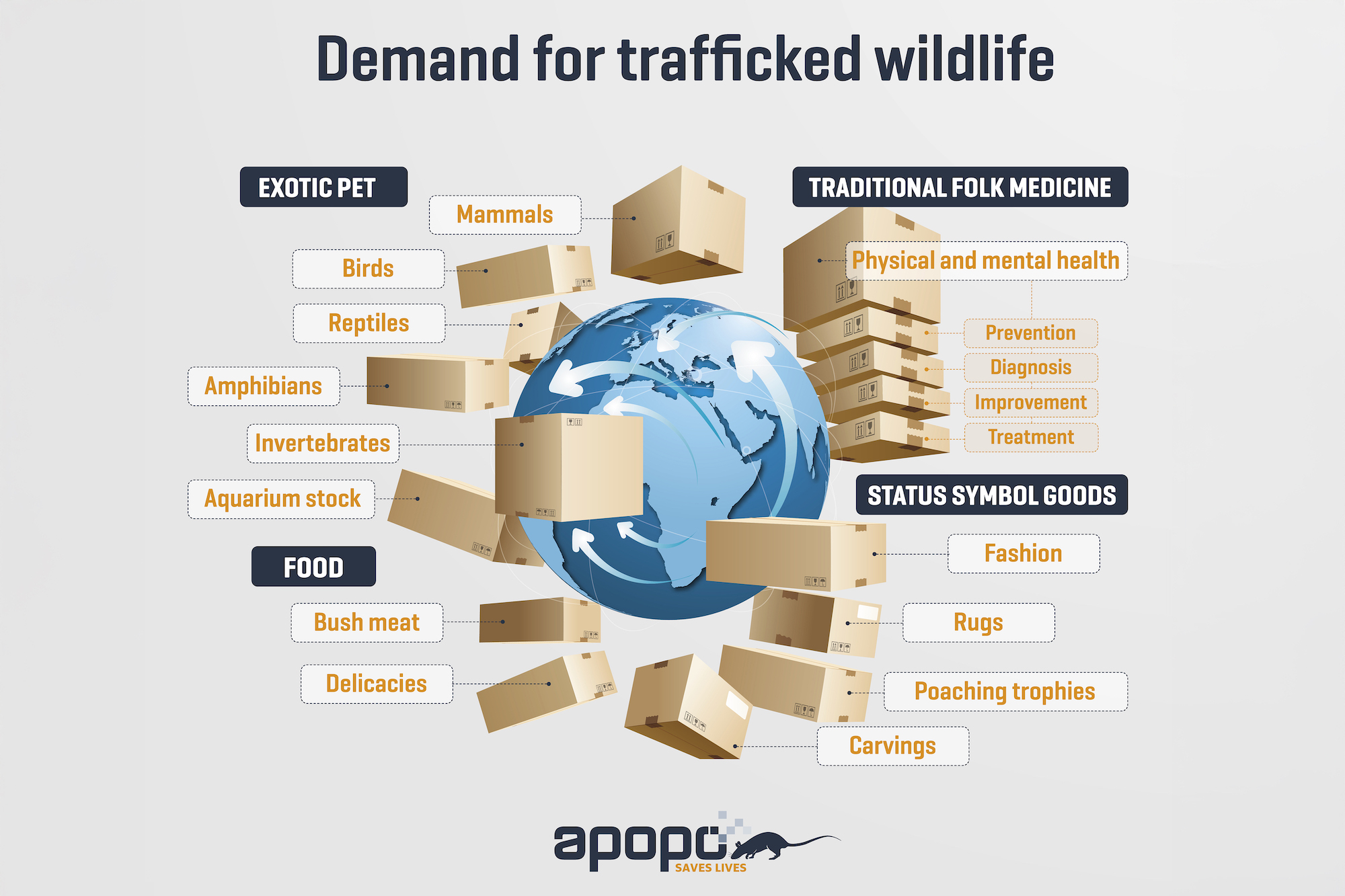The Global Crisis of Wildlife Trafficking
Roughly one million plant and animal species are at risk of extinction due to human activities. Wildlife trafficking—the illegal taking and transportation of protected wildlife—and illegal timber harvesting contribute significantly to this crisis. Wildlife trafficking is the fourth-largest criminal enterprise globally, after drug, weapon, and human trafficking. The illegal trade in dead and live animal specimens is estimated to be worth between USD $7.8 and $10 billion per year (WWF 2012). The illegal timber trade alone is valued at up to USD $7 billion annually.
Driven by global demand, populations of ecologically important species are being decimated. After being taken from their natural habitats, wildlife products are smuggled from source countries into a massive international black market. If left unchecked, trafficking is likely to wipe out hundreds of endangered species within our lifetime (AZA).

Many of the species being trafficked today have legal protections—put in place because previous demand brought them close to extinction. While these laws reduce availability, they do not eliminate demand. Wildlife is trafficked for a range of purposes and includes live animals, carcasses, and body parts. Demand is typically categorized into four main areas: exotic pets, food, traditional medicine, and luxury goods.
Exotic Pets
Unlike other forms of trafficking, animals destined for the exotic pet trade are captured and transported alive. This includes big cats, parrots, songbirds, primates, reptiles, amphibians, insects, spiders, and live coral. These animals are often taken directly from the wild, leading to population declines and disruption of ecosystems. Many die during capture or transit.
Food
Wildlife is also trafficked for consumption, either as bushmeat or delicacies. Bushmeat is often eaten locally in areas where wildlife is sourced and may serve as a necessary source of protein. Delicacy products, like shark fin, abalone, sea turtles, and caviar, are trafficked internationally and command high market value.
Traditional Medicine
Trafficked animal and plant products are widely used in traditional and folk medicines. These items are believed to treat or prevent illness, despite a lack of scientific backing. In the EU, two-fifths of all recent illegal wildlife seizures were medicinal in nature (TRAFFIC). Common examples include rhino horn, pangolin scales, bear bile, dried seahorses, and various roots and fungi.
Luxury Goods
Wildlife products are also trafficked as symbols of wealth and status. Illegal timber is used in luxury carvings and construction. Ivory from elephants, narwhals, and walruses is used for decorative objects. Animal pelts, feathers, bones, and trophies are sold as fashion items or home décor. Demand is often influenced by cultural trends and prestige.
A Global Challenge
All of these forms of demand—whether for pets, food, medicine, or luxury items—fuel the illegal harvest of protected species and their transportation into global black markets. Combating wildlife trafficking requires international cooperation, innovative detection tools, and community-led conservation efforts.
